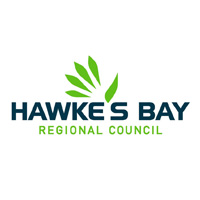
Current filter:

To All Hawke’s Bay Landowners and Occupiers
Public Notice, Hawke’s Bay Today 3 September 2016
There are as many as 8000 bores across Hawke’s Bay accessing groundwater for home supply, stock water, industry, processing and irrigation. If you have a bore on your property, you have an obligation to keep it maintained and managed correctly. No-one is permitted to have a bore that leaks water into or from the bore.
Preventing cross-connection
Drilling, construction and alteration of bores requires a bore permit. You must ensure that bores are cased and sealed to prevent aquifer cross-connection and leakage from the surface into groundwater. Failure to do so may result in degradation of water quality that others depend on. Your well driller will be able to advise you.
Landowners
Bore permits are issued to allow bores to be drilled. They are not transferred when ownership changes. Regardless of this, all landowners are responsible for maintaining any bores on their property to ensure they remain cased and sealed and that there is no cross contamination.
Bore locations
You can search HBRC’s Intramaps database for information about the existence/location of bores on your property - see the consents link at the foot of this page.
Decommissioning bores
Bores that are no longer wanted must be properly decommissioned or sealed. Leaving an unwanted or leaking bore that is not consented can result in contamination and HBRC may take enforcement action to prevent this. Please check the Regional Resource Management Plan pages for specific requirements.
A securely protected well head

14 January 2020
Disclaimers and Copyright
While every endeavour has been taken by the Hawke's Bay Regional Council to ensure that the information on this website is
accurate and up to date, Hawke's Bay Regional Council shall not be liable for any loss suffered through the use, directly or indirectly, of information on this website. Information contained has been assembled in good faith.
Some of the information available in this site is from the New Zealand Public domain and supplied by relevant
government agencies. Hawke's Bay Regional Council cannot accept any liability for its accuracy or content.
Portions of the information and material on this site, including data, pages, documents, online
graphics and images are protected by copyright, unless specifically notified to the contrary. Externally sourced
information or material is copyright to the respective provider.
© Hawke's Bay Regional Council - www.hbrc.govt.nz / +64 6 835 9200 / info@hbrc.govt.nz